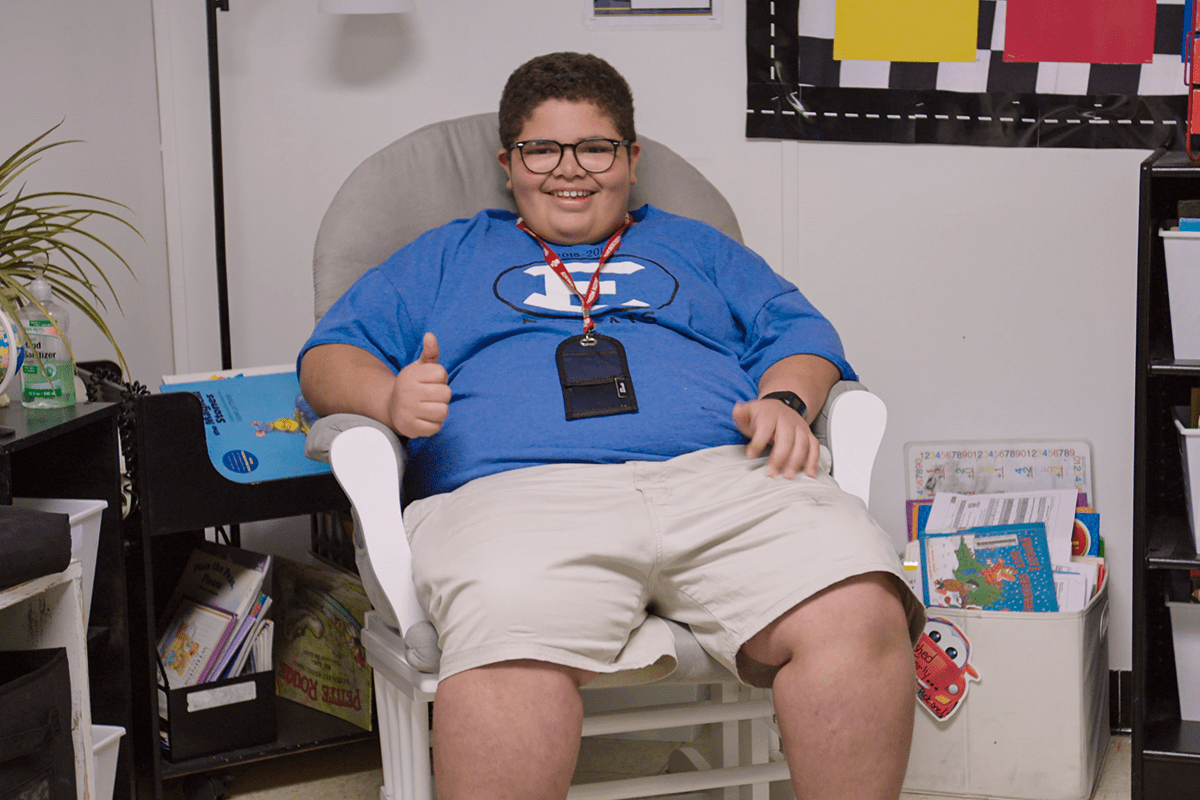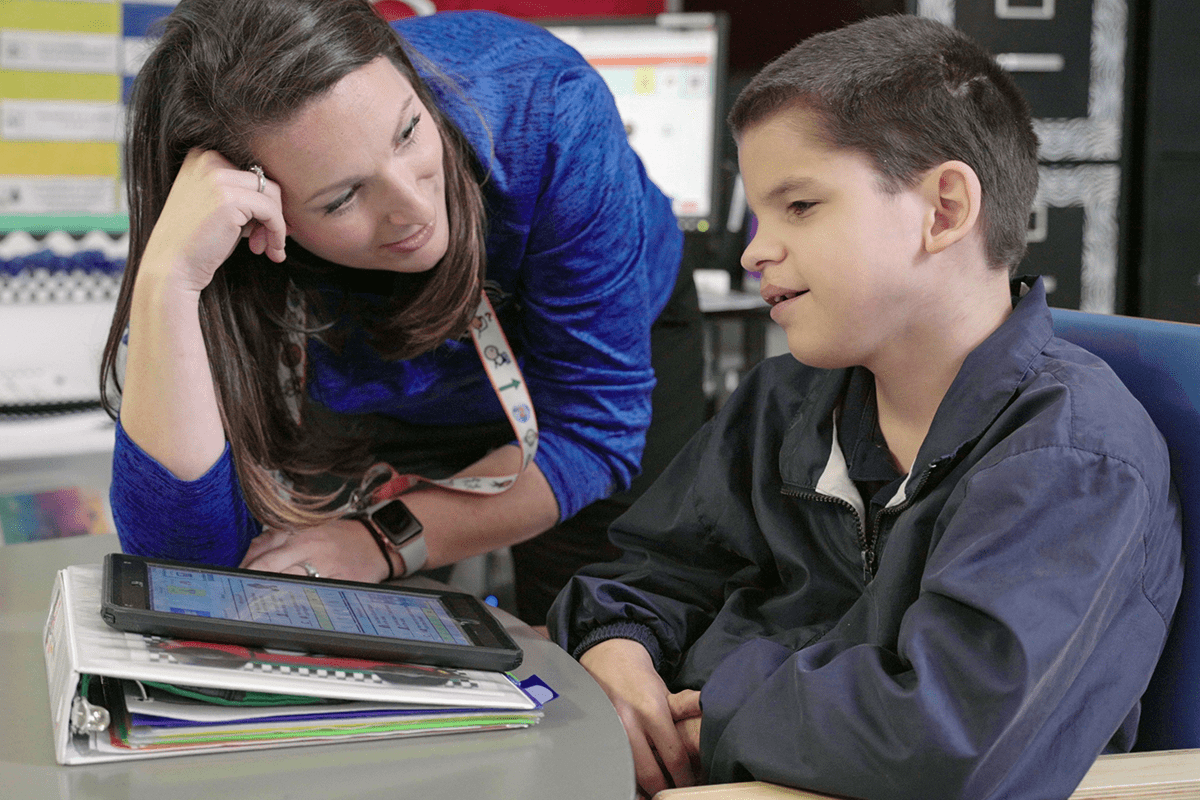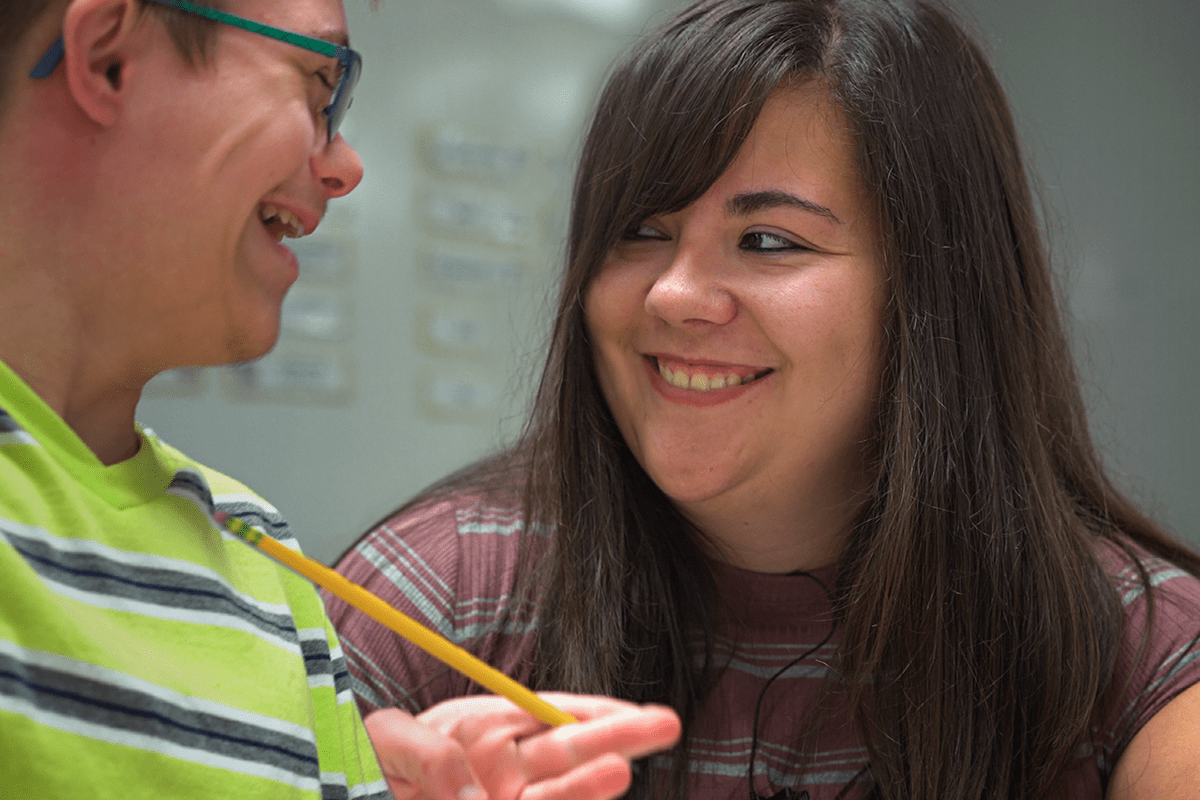What exactly is a replacement behavior?

A replacement behavior is often not the long-term desired behavior that a teacher wants the student to engage in but a short-term, alternative behavior that allows the student to meet their need while they are learning the skills to engage in the desired behavior. Replacement behaviors should be easier and more efficient (faster, reliable) than the behavior of concern, meet the same function and be socially acceptable.
For example, when asked to start their work, a student may be taught to request a break (replacement behavior) instead of screaming while they are still learning the skills needed to begin and complete their work when directed. Both asking for a break and screaming allow the student to get out of work (the function), but asking for a break works faster (if adults immediately honor the request), requires less energy and is much more socially appropriate.
How do I choose a replacement behavior?
When choosing a replacement behavior consider the following:
Why is the student engaging in this behavior?
Use the results from a Functional Behavior Assessment to understand why the student is engaging in the behavior of concern, including what the antecedent that cues the behavior might be and the function of the behavior. Some example functions of behavior are access to attention, escape and access to a tangible, such as a toy or game.
What behavior can I teach the student that allows the student to meet the same function?
In order for a replacement behavior to be effective, it must meet the same function as the behavior of concern. For example, if the student engages in the behavior of concern to gain access to a tangible but the replacement behavior being taught is to request time with the teacher, the student will have no desire to engage in the replacement behavior. Instead, the student must be taught a more socially appropriate way to gain access to the tangible, such as handing the teacher a card with a picture of the toy on it or stating, “I want toy.”
Is the replacement behavior easier than the behavior of concern?
Individuals engage in behavior that follows the path of least resistance. The more work required, the less likely they are to do something. Replacement behaviors are no different. The replacement behavior should be easier to engage in than the disruptive behavior, both physically and in the ease with which the behavior meets the student’s need. Selecting or touching a break card is easier than throwing a chair to get a break. However, if a student’s break card is across the room and they have to get up to use it, throwing the chair may be just as easy, if not easier, to do.
Is the replacement behavior more efficient than the behavior of concern?
When the behavior of concern is more efficient than the replacement behavior, the student will continue to use the behavior of concern to get their need met. If hitting the peer beside them results in the teacher immediately providing attention, but raising their hand results in waiting for the teacher to finish whatever they are currently doing, the student is going to keep hitting the peer beside them.
Is the replacement behavior socially appropriate?
A replacement behavior should be an action that is more appropriate to engage in than the behavior of concern. For example, Ulysses rips his math worksheet to get out of doing his work. Ulysses could be taught to say, “I’m not doing that worksheet.” While this statement also gets Ulysses out of completing the math worksheet, it is not an action that is typically viewed as acceptable in the school setting. Instead, Ulysses could be taught to request an alternative work assignment that covers the same content but is presented differently.
How do I teach a replacement behavior?

Replacement behaviors should be taught the same way all new skills are taught! The more opportunities the student has to practice the replacement behavior, the more likely they are to use that skill when the antecedent to their behavior occurs. Use a gradual release model in which an adult will model the skill for the student, practice the skill with the student and then allow the student to independently practice the skill with opportunities for feedback.
In this model, first set up a scenario where the student is likely to need to use the skill and have them observe you. Next, have the student talk you through using the replacement behavior. Then, have the student walk through using the replacement behavior with you available to provide immediate, corrective feedback, if needed.
For students who are nonverbal, you may set up a scenario where the student is likely to need to use the skill. Have another adult assist the student in using the replacement behavior through their preferred communication method so you can immediately honor the communication.
For example, many students engage in problem behavior to get out of a work task. Physically put the work task in front of you, indicate to the student that you aren’t ready to work and then say, “I want a break.” For some students you may also sign or tap a break card to meet their communication needs. Then, put the work in front of the student and have them walk you through what to do or have an adult assist the student in physically showing you how to request the break. When the student says, “I want a break,” taps their break card, etc., immediately remove the work. Show individuals their communication has power!
Final thoughts on replacement behaviors

Behaviors create muscle memory in the brain, and at first the antecedent-behavior-consequence chain for the behavior of concern is more likely to be followed. Even if the student “knows” what to do, continue to have them practice using the replacement behavior so that when the antecedent occurs throughout the day, the replacement behavior becomes more likely to be followed.
When you’re beginning to develop a Behavior Intervention Plan, consider replacement behaviors that can be taught to the student. The replacement behaviors should be easier, more efficient, meet the same function and more socially appropriate than the behaviors of concern. Examples include a student using a more desirable means of gaining access to a tangible, requesting a break and asking for an alternative work assignment. A gradual release model of teaching a replacement behavior works well even for nonverbal students.
By meeting that functional need through a replacement behavior, the student is practicing the behavior of concern less often and expected school behavior more often. This is always a win in my book.


